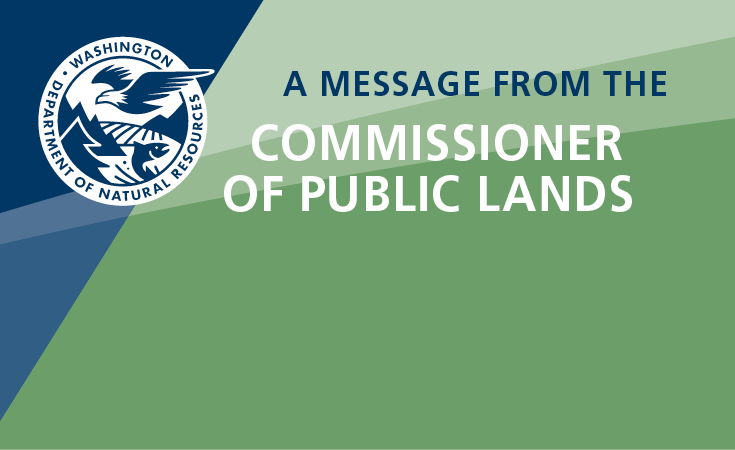Community Wildfire Defense Grant
Last update: 4/29/2025
What is the Community Wildfire Defense Grant (CWDG)?
The Community Wildfire Defense Program, or CWDG, is intended to help at-risk local communities and Tribes; plan for and reduce the risk of wildfire. This program, which was authorized by the Bipartisan Infrastructure Law, prioritizes at-risk communities in an area identified as having high or very high wildfire hazard potential, or have been impacted by a severe disaster that affects the risk of wildfire. For Round 3, the CWDG tool will only use the low-income criteria for cost-share waver eligibility. This change was implemented in February 2025, partway through the application period. Due to this change the application deadline has been extended. Applications for CWDG Round 3 will be accepted until 11:59 p.m. Eastern Standard Time on March 14, 2025.
The program provides funding to communities for two primary purposes:
-
Develop and revise Community Wildfire Protection Plans (CWPP).
-
Implement projects described in a Community Wildfire Protection Plan that is less than ten years old.
The Community Wildfire Defense Grant Program also helps communities in the wildland urban interface (WUI) implement the three goals of the National Cohesive Wildland Fire Management Strategy.
-
Restore and Maintain Landscapes: Landscapes across all jurisdictions are resilient to fire-related disturbances, in accordance with management objectives.
-
Create Fire Adapted Communities: Human populations and infrastructure can better withstand a wildfire without loss of life and property.
-
Improve Wildfire Response: All jurisdictions participate in making and implementing safe, effective, efficient risk-based wildfire management decisions.
CWDG Round 3 Webinar Recordings
Dec. 19, 2024 General Applicant Information
Jan. 2, 2025 Direct vs. Indirect & Financial Categories
Jan. 9, 2025 Payments
Jan. 16, 2025 Contracting
Jan. 23, 2025 Scoring
Jan. 30, 2025 Audits
Feb. 6, 2025 (No Recording)
Feb. 13, 2025 (No Recording)
Feb. 20, 2025 Q&A
Feb. 27, 2025 Q&A
What does the CWDG fund?
There are three types of projects for which the grant provides funding:
-
The development of Community Wildfire Protection Plans
-
The updating of Community Wildfire Protection Plans
-
The implementation of projects described in a Community Wildfire Protection Plan and/or Hazard Mitigation Plan with a Wildfire Section that is less than ten years old.
-
Funding is not available for fire suppression training, equipment, or supplies.
Who can apply for CWDG funds?
Any community at risk to wildfire can apply, including:
-
Local government
-
Tribes
-
Non-profit organizations (including homeowner associations)
-
State forestry agency
How are CWDG funds prioritized?
Applications will be prioritized by areas of high or very high wildfire hazard and/or communities impacted by a severe disaster within the last ten years which increased wildfire risk and/or hazard to the project area.
The maximum amount of Federal funding awarded to any one community or Tribe via this competitive process is:
-
$250,000 for the creation or updating of a Community Wildfire Protection Plan.
-
$10 million for a project described within a Community Wildfire Protection Plan less than 10 years old.
Required matching funds:
-
10% non-Federal match for proposals to develop or update a Community Wildfire Protection Plan (CWPP).
-
25% non-Federal match for proposals to implement projects described within a CWPP.
-
Communities meeting the definition of underserved or Tribal may request a waver of match.
Registration
Register your organization in the System for Award Management. Organizations must have an active registration with the System for Award Management (SAM.gov), which will generate a Unique Entity Identifier (UEI). Creating a SAM registration may take several weeks or more to complete. Therefore, ensure you apply for your SAM registration promptly.
Washington State Point-of-Contact
Guy Gifford
(509) 990-6218
Legacy CWDG Documents
- CWDG Dashboard
- Notice of Funding Opportunity (NOFO) for projects carried out by Tribes.
- Notice of Funding Opportunity (NOFO) for projects in Western States and Territories.
- DNR 10-Year Wildfire Strategic Plan - For referencing areas of risk and other identified WA State wildfire strategies.
- DNR 2020 Forest Action Plan - For referencing priority watersheds for forest health projects.
-
2022 Fire Adapted Communities (FAC) - A primer on understanding the CWDG and whether/how to apply.
-
DNR Community Wildfire Protection Plans (CWPP) - DNR's landing page for all completed CWPPs.
-
2022 WA State low-income spreadsheet - A spreadsheet to reference whether the community your project is located within is considered low income for match waiver eligibility.
Additional Federal Wildfire Grant Resources
Federal Wildfire Resources describes a variety of pre-disaster Federal grant and cost-share programs across the U.S. Department of Agriculture (USDA) and the Federal Emergency Management Agency (FEMA), that can support community-led efforts to prepare for wildfire.


